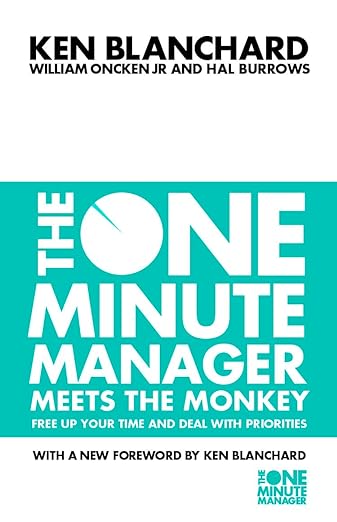Understanding Your Stakeholders’ Personalities is Crucial For Better Project Outcomes
As a project manager, you’re often dealing with a wide variety of stakeholders, and each comes with their own communication style, motivations, and decision-making process. If you’re not tailoring your approach to different personalities, you’re missing key opportunities to connect and succeed. Understanding Michael Yardney’s four personality types—Driver, Analytical, Amiable, and Expressive—can help you foster stronger relationships and navigate complex project dynamics.
Here is what I do when working with different personality types:
Directors (Drivers): Results-Oriented Stakeholders

They are the real ‘Drivers’ and want results, fast.
They are action-focused and expect efficiency in everything they do.
Example: Donald Trump, Steve Jobs, Bill Gates
Steps to get the best Outcome:
- Summarise Key Points First: Start with the outcome or the most critical points.
- If you are sending an email, your subject line and the first sentence should hit the main objective, so they instantly know what needs attention.
- For Example:
Subject: Project Update – Achieved Milestone X, On Track for Y.
- Provide Clear Action Items: Directors appreciate knowing what’s next.
- Use bullet points or numbered lists to outline tasks in a concise manner.
- Example: “Next steps:
- Finalise design by [Date],
- Review materials on [Platform].
- Finalise quote by [Date].”
- Be Decisive and Confident: Avoid phrases like “I think” or “perhaps.”
- Be firm in your recommendations to match their direct style.
- For Example: “We should proceed with option A for a faster ROI.”
Thinkers (Analyticals): Data-Driven Stakeholders
As the name suggests, they are Thinkers or Analyticals and they rely on logic, data, and comprehensive plans. They expect thorough information to guide decision-making.
Example: Albert Einstein, Stephen Hawking

Steps to get the best Outcome:
- Provide Detailed Reports: Always come prepared with facts, figures, and well-structured data.
- They need clarity before making a decision.
- Example: “Here’s a breakdown of projected costs, timelines, and risk analysis in this report.”
- Use Clear, Organised Charts and Data Visuals: Thinkers appreciate visual clarity.
- Use charts or graphs to convey complex ideas succinctly.
- Example: Present budget allocations in pie charts for better understanding.
- Anticipate Their Questions: Thinkers will question assumptions and dive into the details.
- Anticipate their concerns by proactively addressing data or logic gaps.
- Example: “I have included a sensitivity analysis to show the impact of variable X.”
Realtors (Amiables): Relationship-Focused Stakeholders

These type of people value collaboration and trust. They want to feel connected and involved.
Example: Nelson Mandela, Mother Teresa, Lady Diana
Steps to get the best Outcome:
- Start with a Friendly Conversation: Before diving into project details, build rapport.
- Take a few moments to ask about their day or personal interests.
- Example: “How was your weekend? I know you were excited about your daughter’s graduation.”
- Empathise with Their Perspective: Show that you value their input by asking for feedback.
- Listen attentively.
- Example: “How do you feel this approach will work for the team?”
- Frame Discussions Around Teamwork: Highlight how your solutions will foster collaboration and unity among stakeholders.
- Example: “This approach will help us all stay aligned and meet our collective goals.”
Socialisers (Expressives): Creative Stakeholders
Expressives as the name suggests are creative and enthusiastic. They enjoy dynamic conversations and brainstorming
Example: Jerry Seinfeld, Jim Carrey, Robin Williams

Steps to get the best Outcome:
- Use Visual Presentations: Capture their attention with engaging visuals or storytelling techniques.
- Keep the energy high.
- Example: “Here’s an infographic that illustrates our project roadmap in a fun, engaging way.”
- Encourage Brainstorming: Socialisers love to bounce around ideas.
- Make space for creative thinking and input.
- Example: “Let’s take 10 minutes to brainstorm fresh ideas for phase two.”
- Maintain Enthusiasm: Keep the conversation lively and positive, showing excitement about new possibilities.
- Example: “This initiative has huge potential to be a game-changer for our team.”
Let's Wrap it up
Next time you are interacting with stakeholders, ask yourself two key questions:
- Is this person more people-oriented or self-contained?
- Are they fast-paced or slow-paced?
By tailoring your communication style to each personality type, you will find it easier to turn challenging interactions into productive collaborations. Not only will this approach help you achieve better project outcomes, but it will also strengthen your relationships with stakeholders. Adapt, communicate clearly, and be proactive in managing diverse personalities, and you will see a positive impact on your projects.
My Recommendations
Disclaimer: This article contains affiliate links, which allow me to earn a small commission at no extra cost to you. Rest assured, I only recommend books and tools I trust and use in my own journey.







